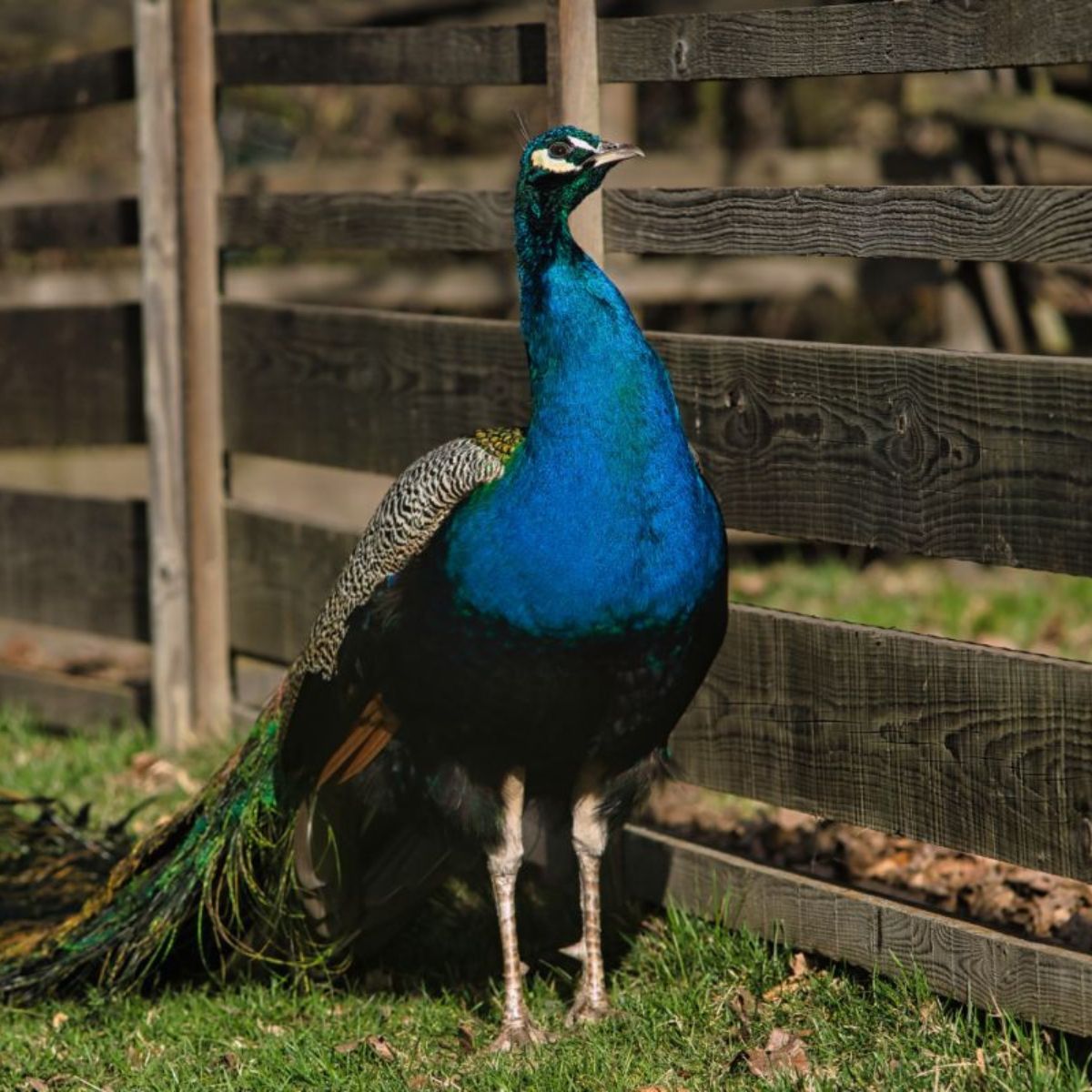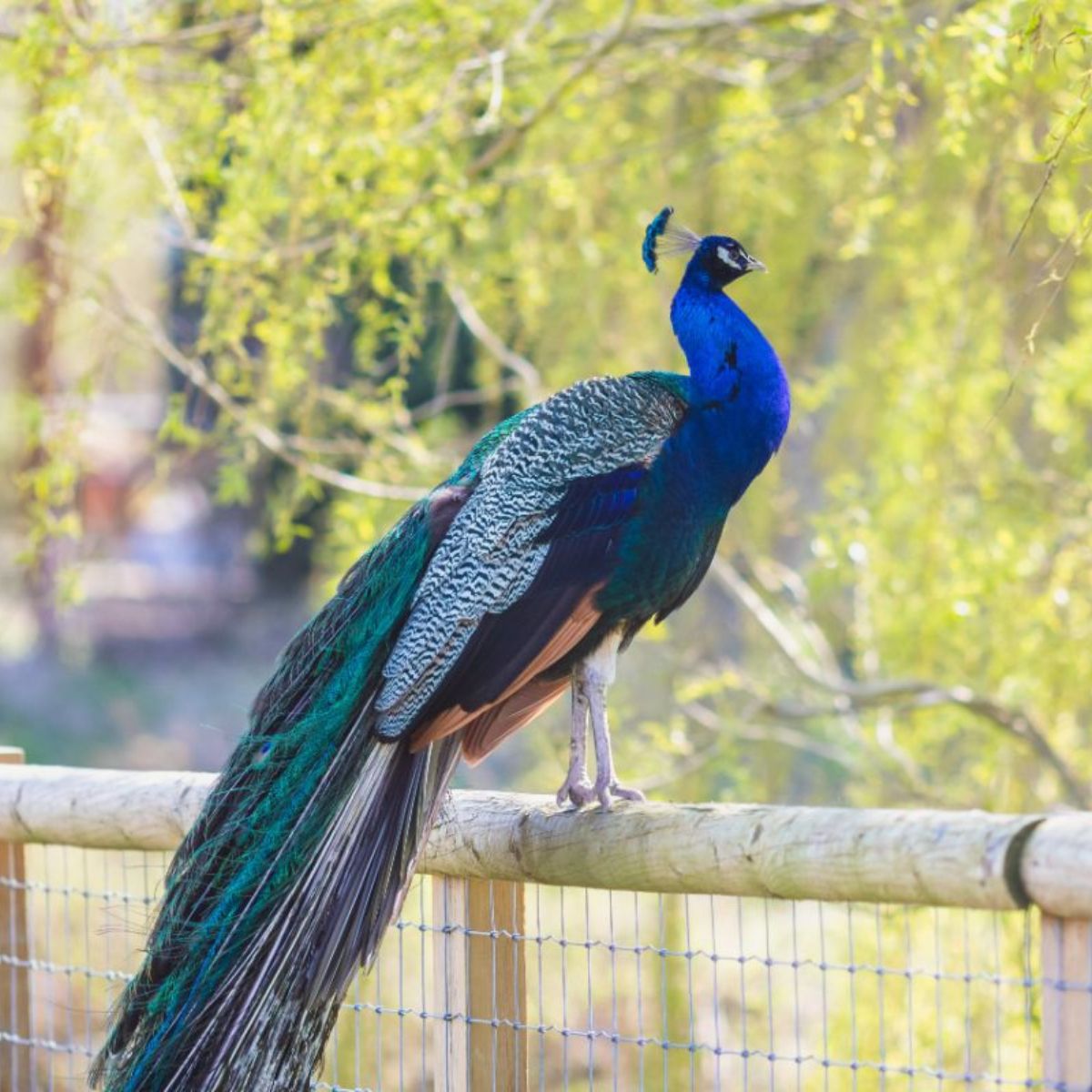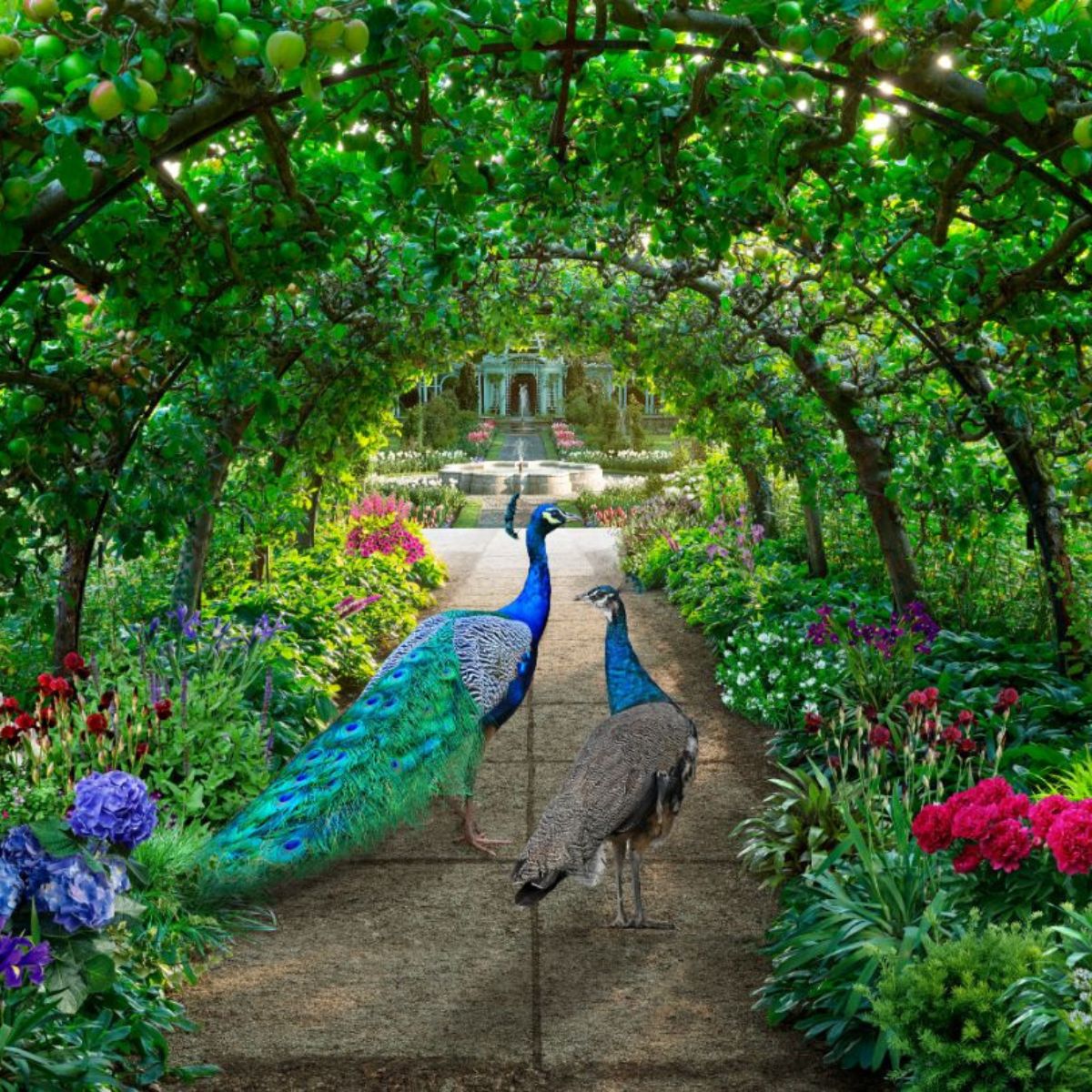Have you ever wondered where peacocks sleep? These majestic birds with their dazzling plumage are more than just a feast for the eyes. Their sleeping habits might surprise you! If you're a wildlife enthusiast or simply curious about the nocturnal routines of these stunning creatures, you're in the right place. Today, we'll dive deep into the world of peacocks and uncover the mystery behind their resting spots. So, let's get started, shall we?
Peacocks, or more scientifically known as peafowls, are famous for their vibrant feathers and loud calls. But when the sun goes down, they transform into stealthy night owls—well, not exactly owls, but you get the point. Understanding where these birds sleep is crucial if you're planning to spot them in the wild or even if you're just fascinated by their behavior.
Now, buckle up because this article will take you on a journey through the lives of peacocks, exploring everything from their preferred sleeping spots to the reasons behind their choices. By the end of this read, you'll have all the answers you need—and maybe even a newfound appreciation for these magnificent creatures!
- Mastering Remoteiot Vpc Ssh Raspberry Pi A Comprehensive Guide For Windows 10 Users
- Astrid Nelsia The Rising Star You Need To Know
Table of Contents
- Biography of Peacocks
- Natural Habitat and Behavior
- Where Do Peacocks Sleep?
- Why Do Peacocks Sleep in Trees?
- Can Peacocks Sleep on the Ground?
- Seasonal Changes in Sleeping Patterns
- Peacocks and Human Interaction
- Interesting Facts About Peacock Sleep
- Conservation Efforts for Peacocks
- Conclusion: Why Knowing Where Peacocks Sleep Matters
Biography of Peacocks
Who Are These Majestic Birds?
Let's start with the basics. Peacocks, scientifically known as peafowls, belong to the pheasant family. There are three main species: the Indian peafowl, the green peafowl, and the Congo peafowl. The most famous of these is the Indian peafowl, which is native to India and Sri Lanka. These birds are known for their striking blue and green plumage, especially the males, who flaunt their long, iridescent tail feathers during courtship displays.
But did you know that the term "peacock" actually refers specifically to the male bird? The females are called peahens, and together, they form a group known as peafowls. So, when we talk about where peacocks sleep, we're technically referring to the sleeping habits of male peafowls. Cool, right?
Natural Habitat and Behavior
Where Do Peacocks Call Home?
Peacocks are native to regions with warm climates, such as India, Southeast Asia, and parts of Africa. They thrive in dense forests, open woodlands, and even agricultural lands. Their adaptability has allowed them to spread across the globe, where they can now be found in zoos, parks, and even private estates.
- Unlock The Power Of Remoteiot Vpc Raspberry Pi Free Your Ultimate Guide
- Momentum Shake Review The Ultimate Guide To Your Fitness Journey
Peacocks are diurnal creatures, meaning they are active during the day and rest at night. During the day, they spend their time foraging for food, which includes insects, plants, and small animals. But as the sun sets, their focus shifts to finding a safe and comfortable place to sleep. And that brings us to the heart of our topic...
Where Do Peacocks Sleep?
Peacocks are smart birds, and when it comes to sleep, they prioritize safety above all else. Their preferred sleeping spots are usually high up in trees, where they can avoid predators like leopards, jackals, and snakes. Trees provide them with a vantage point to keep an eye on their surroundings while they rest.
But it's not just about height. Peacocks also choose trees with sturdy branches that can support their weight. Some of their favorite trees include mango trees, banyan trees, and even palm trees. These trees offer the perfect combination of security and comfort, ensuring a peaceful night's sleep.
Why Do Peacocks Sleep in Trees?
The primary reason peacocks sleep in trees is to stay safe from predators. Ground-dwelling animals like foxes and wildcats pose a significant threat to these birds, especially at night when their vision is impaired. By sleeping in trees, peacocks can avoid these dangers and remain alert to any potential threats.
Another reason is temperature regulation. Trees provide shelter from the elements, protecting peacocks from harsh weather conditions like rain and wind. Plus, the elevated position helps them stay cool during the night, which is essential in their tropical habitats.
Can Peacocks Sleep on the Ground?
While peacocks prefer sleeping in trees, there are instances where they might opt for ground-level resting spots. This usually happens in areas where they feel safe, such as enclosed parks or private properties. In these environments, the risk of predation is minimal, allowing peacocks to relax and sleep without worry.
That said, sleeping on the ground is not their first choice. Peacocks are naturally cautious creatures, and they will always seek higher ground if they sense danger. So, if you spot a peacock sleeping on the ground, it's likely because it feels secure in its surroundings.
Seasonal Changes in Sleeping Patterns
Peacocks, like many animals, adjust their behavior according to the seasons. During the rainy season, for example, they may choose denser trees to shield themselves from heavy rainfall. In contrast, during the dry season, they might seek out trees near water sources to stay hydrated.
Interestingly, peacocks also change their sleeping patterns during the breeding season. Males become more territorial and may spend extra time guarding their nests, ensuring the safety of their peahens and chicks. This behavioral shift highlights their adaptability and intelligence in response to changing circumstances.
Peacocks and Human Interaction
Living Among Humans
Peacocks have a long history of coexisting with humans. In many cultures, they are considered sacred birds and are often kept in temples and palaces. Their presence in human habitats has led to some interesting interactions, including their sleeping habits.
In urban areas, peacocks have been known to sleep on rooftops, balconies, and even garden sheds. These unconventional sleeping spots are a testament to their ability to adapt to different environments. However, it's important to remember that peacocks are wild animals, and their needs should always be respected and prioritized.
Interesting Facts About Peacock Sleep
- Peacocks can sleep standing up, using a technique called "unihemispheric slow-wave sleep," where one half of their brain remains awake while the other rests.
- They are known to "roost" together in groups, providing mutual protection and warmth during the night.
- Peacocks are incredibly light sleepers and can detect the slightest movement or sound, allowing them to respond quickly to potential threats.
- Despite their large size, peacocks are excellent climbers and can navigate tree branches with ease.
Conservation Efforts for Peacocks
While peacocks are not currently endangered, conservation efforts are still important to ensure their survival in the wild. Habitat loss, poaching, and climate change are some of the challenges they face. Organizations around the world are working tirelessly to protect these magnificent birds and their natural habitats.
One of the most effective ways to support peacock conservation is by creating protected areas where they can live and thrive without human interference. Additionally, raising awareness about their importance in ecosystems can help foster a greater appreciation for these birds and encourage people to take action.
Conclusion: Why Knowing Where Peacocks Sleep Matters
So, there you have it—peacocks sleep in trees, mostly because it keeps them safe from predators and provides a comfortable resting spot. But their sleeping habits are just one piece of the puzzle when it comes to understanding these incredible birds. From their stunning plumage to their intelligent behavior, peacocks continue to captivate and inspire people around the world.
We hope this article has shed some light on the mystery of where peacocks sleep and why it matters. If you've enjoyed this read, feel free to share it with your friends and family. And if you have any questions or comments, don't hesitate to leave them below. After all, the more we learn about these majestic creatures, the better equipped we are to protect them for future generations.
Now, go ahead and impress your friends with your newfound knowledge of peacock sleeping habits. Trust us—they'll be peacock-pleased!



Detail Author:
- Name : Thaddeus Shields
- Username : flavie29
- Email : alexandria.okuneva@gmail.com
- Birthdate : 1975-09-15
- Address : 54533 Swaniawski Summit Suite 672 Lake Elenorville, ME 72396
- Phone : +1.434.632.5939
- Company : Batz-Satterfield
- Job : Industrial Production Manager
- Bio : Ex id ullam sequi perferendis sit saepe. Esse asperiores voluptate qui similique. Voluptas mollitia cupiditate dolor eveniet expedita sed vero a.
Socials
instagram:
- url : https://instagram.com/art.quitzon
- username : art.quitzon
- bio : Assumenda quibusdam adipisci qui sint. Eius commodi repudiandae sed perferendis dolores eum dolor.
- followers : 3826
- following : 1836
facebook:
- url : https://facebook.com/aquitzon
- username : aquitzon
- bio : Exercitationem facilis quo et.
- followers : 4855
- following : 1985